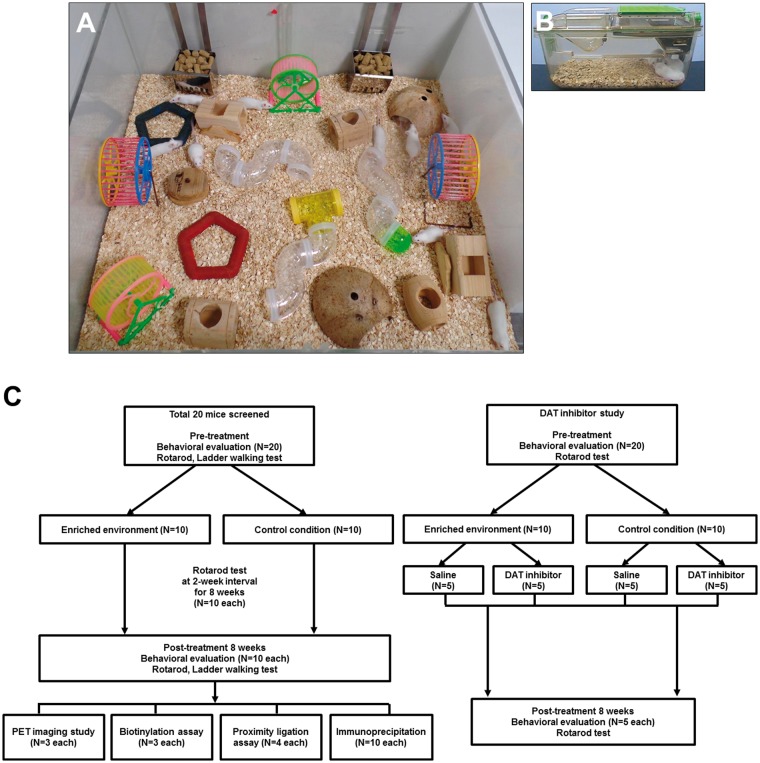Figure 1.
Experimental design. (a) CD-1 (ICR) mice were randomly assigned to either an enriched environment (EE) or standard conditions starting at six weeks of age for two months. The EE was provided in a huge cage (86 × 76 × 31 cm3) containing various objects, such as tunnels, shelters, toys, and running wheels for voluntary exercise, and allowed for enriched social interaction (10 mice/cage). (b) Control mice were housed for the same duration in standard cages (27 × 22.5 × 14 cm3). (c) A schematic timeline of the experiments. A total of 20 CD-1 (ICR) mice were screened at 6 weeks of age, and randomly assigned to either control condition (n = 10) or the EE condition (n = 10) for behavioral assessment to investigate functional outcomes. Among the subjects, six mice were recruited for the PET imaging at eight weeks post-treatment (n = 3 per group). A total of six mice were also recruited to evaluate surface DAT levels using a biotinylation assay (n = 3 per group). For the PLA assay, eight mice were recruited to evaluate phosphorylation of DAT at eight weeks post-treatment (n = 4 per group). Mice were also recruited to confirm phosphorylation of DAT using immunoprecipitation (IP) (n = 10 per group). In an additional set, a total of 20 mice were used for the DAT inhibitor experiment. Mice from the control group (n = 5) and from the EE group (n = 5) were injected with DAT inhibitor, JHW0007, and mice from the control group (n = 5) and from the EE group (n = 5) were injected with saline to confirm that a DAT inhibitor-mediated inhibition could reverse functional outcomes.

